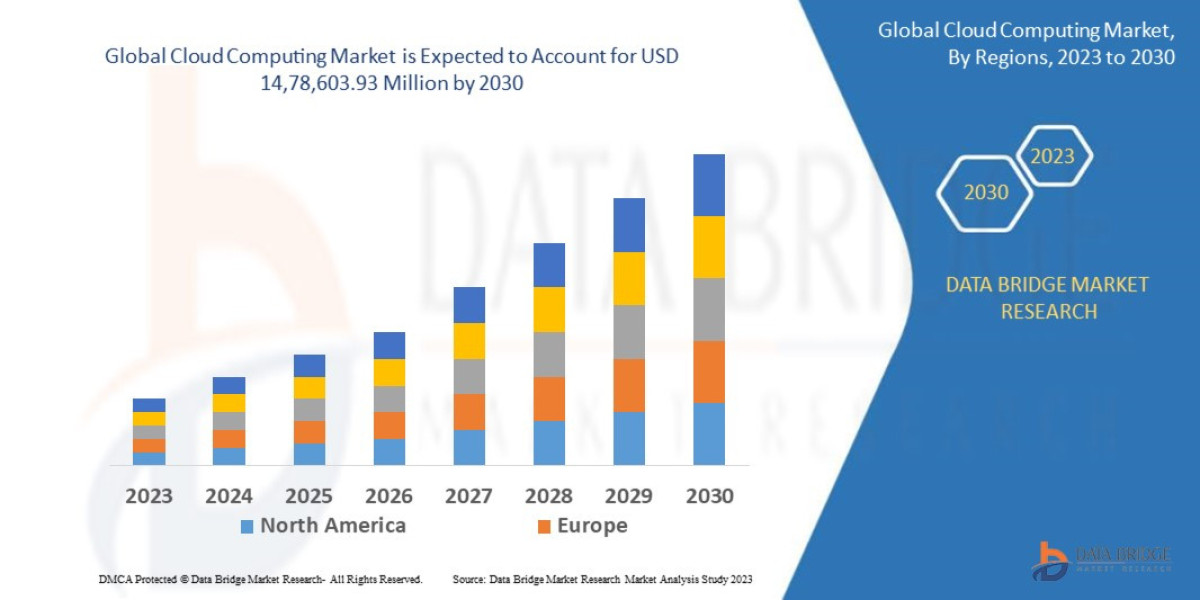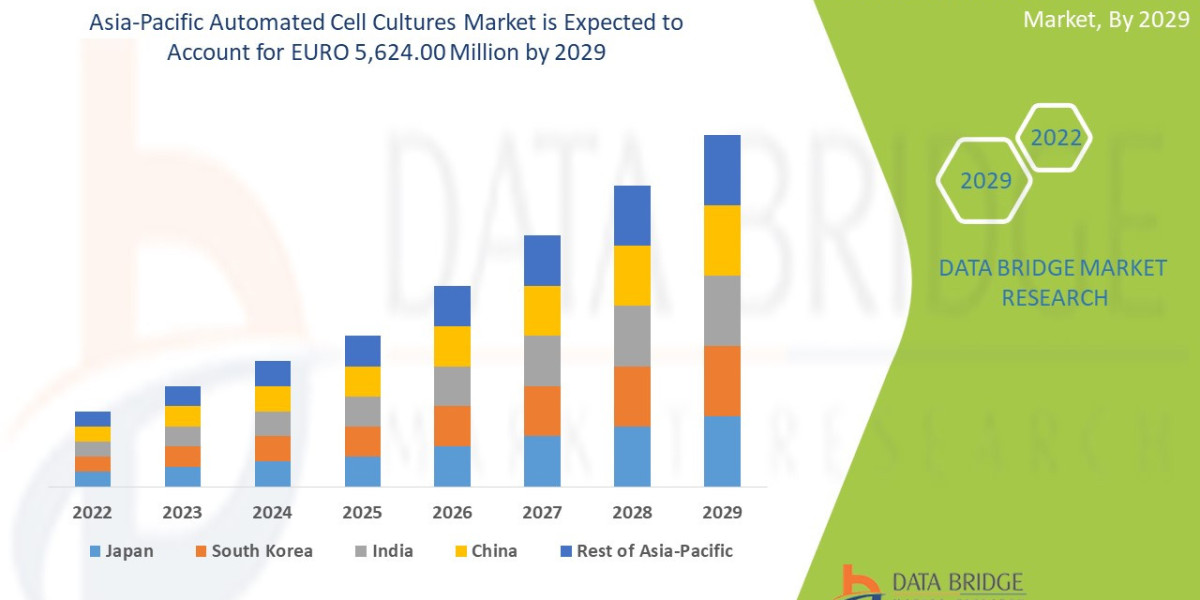Executive Summary
The global cloud computing market size was valued at USD 557.66 billion in 2024 and is projected to reach USD 1,705.89 billion by 2032, with a CAGR of 15.00% during the forecast period of 2025 to 2032.
Market Overview
The Cloud Computing Market encompasses the entire ecosystem of distributed data processing and storage solutions, displacing traditional on-premises data centers. Its structure is highly concentrated, with a few dominant "hyperscalers" setting the pace for innovation and pricing.
Key Segments by Service Model
Software as a Service (SaaS) (Largest Segment by Revenue): Applications delivered over the internet on a subscription basis (e.g., Salesforce, Microsoft 365). Its growth is tied to the continuous demand for enterprise-specific software solutions.
Infrastructure as a Service (IaaS): Provision of core computing resources like virtual machines, storage, and networking. This is the foundational layer and the area where hyperscalers compete most fiercely on price and scale.
Platform as a Service (PaaS) (Fastest-Growing Segment): Tools and services used for application development and deployment, including operating systems, programming language execution environments, and databases. PaaS is accelerating due to the rapid development cycles of cloud-native applications.
Key Segments by Deployment Model
Public Cloud: Services offered by third-party providers over the public internet.
Private Cloud: Computing services used exclusively by one organization, usually managed either on-premises or by a third party.
Hybrid Cloud: A mix of public and private cloud environments, connected by proprietary technology, allowing data and applications to be shared between them. This is the preferred strategy for enterprises managing sensitive data.
Drivers and Current Dynamics
Core Market Drivers:
AI and Machine Learning Adoption: The massive computational power and specialized infrastructure (GPUs/TPUs) required for training large AI models are only economically viable via hyperscale public cloud providers.
Digital Transformation Mandate: Post-pandemic, virtually all businesses, regardless of size, are migrating core applications to the cloud to achieve scalability, elasticity, and lower operational expenditure (OpEx).
Big Data and IoT Growth: The proliferation of data from interconnected devices requires distributed storage and processing capabilities that on-premises systems cannot handle efficiently.
Current Dynamics: The market is pivoting from a phase of mass migration to one of optimization. Enterprises are focusing on FinOps (Cloud Financial Operations) to manage soaring cloud costs, leading to a demand for services that help rationalize spending across multiple cloud providers.
Market Size & Forecast
The global cloud computing market size was valued at USD 557.66 billion in 2024 and is projected to reach USD 1,705.89 billion by 2032, with a CAGR of 15.00% during the forecast period of 2025 to 2032.
For More Information Visit https://www.databridgemarketresearch.com/reports/global-cloud-computing-market
Key Trends & Innovations
The current innovation cycle is dominated by the demands of generative AI and the need to distribute compute power closer to the data source.
1. The Rise of Generative AI and Foundation Models
The deployment and fine-tuning of large language models (LLMs) and other foundation models have become the single biggest driver of cloud expenditure. Hyperscalers are competing intensely to provide the most powerful and cost-effective GPU/TPU access and AI-as-a-Service (AIaaS) platforms, effectively selling intelligence as a utility.
2. Edge Computing and Distributed Cloud
As IoT devices, smart factories, and 5G networks proliferate, processing data immediately at the point of creation (the edge) is crucial. Distributed cloud models extend the public cloud control plane and services to these remote locations, ensuring low latency for critical applications like autonomous vehicles and industrial robotics.
3. Sustainability and Green Cloud
With data centers consuming vast amounts of energy, sustainability is moving from a marketing claim to a competitive necessity. Hyperscalers are investing heavily in renewable energy sourcing, optimized data center cooling (e.g., liquid immersion cooling), and developing tools that allow customers to measure and optimize the carbon footprint of their workloads.
4. Kubernetes and Cloud-Native Orchestration
Kubernetes has cemented its position as the standard operating system for the cloud, enabling portable and scalable containerized applications. This trend drives the shift toward multi-cloud management platforms that allow enterprises to deploy and manage workloads consistently across any public or private environment.
Competitive Landscape
The market exhibits an oligopolistic structure, with the Big Three Hyperscalers dominating the IaaS and PaaS segments, while the SaaS layer remains highly fragmented.
Major Players and Strategic Strategies
Amazon Web Services (AWS): Strategy is Market Dominance through Breadth and Depth. They maintain the largest market share by offering the most comprehensive and mature suite of services, focusing on continuous incremental innovation and deep vertical expertise (e.g., specialized services for healthcare and finance).
Microsoft Azure: Strategy is Enterprise Integration and Hybrid Leadership. They leverage their legacy dominance in enterprise software (Windows, Office) and strategically focus on seamless hybrid cloud integration with existing on-premises infrastructure, offering powerful tools for developers familiar with the Microsoft ecosystem.
Google Cloud Platform (GCP): Strategy is AI Differentiation and Open Source. They compete by leveraging Google’s leadership in AI, offering cutting-edge machine learning and data analytics capabilities. They also promote an open-source, vendor-neutral approach that appeals to customers wary of vendor lock-in.
Alibaba Cloud (Regional Dominance): Dominant in the Asia-Pacific region, competing based on local infrastructure scale and cultural knowledge, particularly in China and Southeast Asia.
The competitive battlefield is currently shifting from raw compute power (IaaS) to differentiated PaaS offerings and pre-built AI/ML services.
Regional Insights
Cloud adoption maturity and growth rates vary significantly based on regulatory climate, economic development, and existing IT infrastructure.
North America (Innovation Hub and Mature Adoption)
Performance: The largest and most mature market, serving as the primary R&D base for hyperscalers. Characterized by aggressive adoption of cutting-edge technologies (GenAI, Edge).
Opportunity: Deepening adoption in highly regulated sectors (healthcare, government) and significant spend on FinOps and optimization tools.
Europe (Regulation and Data Sovereignty Focus)
Performance: Driven by regulatory demands (GDPR) and high awareness of data sovereignty. Growth is robust, but spending patterns favor hybrid models and local providers who can guarantee data residency.
Opportunity: Strong demand for Sovereign Cloud solutions and sustainable, green cloud infrastructure aligned with EU environmental mandates.
Asia-Pacific (APAC) (Fastest Growing)
Performance: Explosive growth fueled by rapid digitalization in emerging economies (India, Southeast Asia). The market is highly diverse, with a mix of public cloud adoption for mobile-first consumers and private/hybrid use for established enterprise sectors (finance).
Opportunity: Massive greenfield opportunities for SaaS and IaaS adoption as SMEs rapidly scale, particularly leveraging local data center presence from regional hyperscalers like Alibaba and Tencent Cloud.
Challenges & Risks
The sustained growth of the market is constrained by technical complexity, cost management issues, and evolving security threats.
1. Cloud Cost Management (FinOps)
The initial promise of cost savings often clashes with reality due to complex pricing structures, wasted resources, and lack of dedicated oversight. "Cloud shock"—unexpectedly high bills—is a major challenge, driving demand for FinOps tools and services to optimize infrastructure sprawl.
2. Cybersecurity and Compliance Complexity
While the cloud environment is inherently secure, managing the Shared Responsibility Model is complex. Misconfiguration of security settings remains the leading cause of data breaches. Furthermore, maintaining compliance across multi-cloud environments requires sophisticated, centralized governance tools.
3. Vendor Lock-in and Interoperability
Despite the rhetoric of multi-cloud, proprietary PaaS and specialized AI services create deep dependencies on a single provider, making migration expensive and difficult (vendor lock-in). The lack of true, seamless portability between different hyperscalers remains a significant structural risk for large enterprises.
4. Talent Gap
There is a chronic global shortage of qualified professionals skilled in cloud architecture, security, and especially FinOps and GenAI engineering. This human capital constraint slows down both migration speed and the efficient use of cloud resources.
Opportunities & Strategic Recommendations
Future success hinges on becoming indispensable to the AI ecosystem, specializing in vertical solutions, and solving the critical cost optimization and governance problems.
Strategic Recommendations for Stakeholders
Prioritize AI-Native Services (Hyperscalers): Shift R&D focus from general IaaS to building specialized, low-latency infrastructure and services specifically designed for GenAI workloads (e.g., custom chips, specialized data lakes, and developer tools for prompt engineering).
Specialize in Vertical and Compliance Services (Managed Service Providers): Instead of competing on scale, Managed Service Providers (MSPs) should focus on deep regulatory expertise within specific verticals (e.g., FedRAMP in government, HIPAA in healthcare) and offer specialized governance and security wrappers across multiple clouds.
Monetize FinOps and Governance Tools (Startups/Vendors): The biggest immediate enterprise pain point is cost. Develop autonomous FinOps platforms that use AI to automatically identify and shut down underutilized resources, negotiate pricing, and enforce budgetary policies across heterogeneous cloud environments.
Embrace Multi-Cloud Abstraction Layers (Enterprises): To mitigate vendor lock-in, actively adopt technologies like Kubernetes and service mesh architectures (PaaS tools) that allow application deployment to be abstracted from the underlying infrastructure, providing genuine operational flexibility and negotiating leverage.
Browse More Reports:
Global Pediatric Imaging Market
Global Space Situational Awareness Market
Global Ophthalmology Small Molecule API Market
North America Wind Turbine Pitch System Market
Europe Diet and Nutrition Apps Market
Global Bunyavirus Infections Market
Asia-Pacific Diet and Nutrition Apps Market
Global Bio preservation Market
Global Carded Blister Packaging Market
Global Heavy Duty Corrugated Packaging Market
Global Engine and Transmission Thermal Systems Market
Global Dental Practice Management Software Market
Global Cigarette Butt Market
Global Sachet Packaging Market
Global Compostable Toothbrush Market
Global Noise Source Mapping Market
Global Ballistic Protection Bulletproof Glass Market
Global Hair Relaxer Market
Global Fortified Breakfast Cereals Market
Global Robotic Prosthetics Market
Global Micro and Nano Programmable Logic Controller (PLC) Market
Global Fiber Drums Market
Europe Plant-Based Milk Market
North America Xylose Market
Global Laboratory Sterilizer Market
Global Aircraft Soft Goods Market
Global Duvet Covers Market
Middle East and Africa Hand Holes Market
Global Landau-Kleffner Treatment Market
Global Tralokinumab Market
Global LED Matrix Boards Outdoor LED Display Market
About Data Bridge Market Research:
An absolute way to forecast what the future holds is to comprehend the trend today!
Data Bridge Market Research set forth itself as an unconventional and neoteric market research and consulting firm with an unparalleled level of resilience and integrated approaches. We are determined to unearth the best market opportunities and foster efficient information for your business to thrive in the market. Data Bridge endeavors to provide appropriate solutions to the complex business challenges and initiates an effortless decision-making process. Data Bridge is an aftermath of sheer wisdom and experience which was formulated and framed in the year 2015 in Pune.
Contact Us:
Data Bridge Market Research
US: +1 614 591 3140
UK: +44 845 154 9652
APAC : +653 1251 975
Email:- corporatesales@databridgemarketresearch.com








